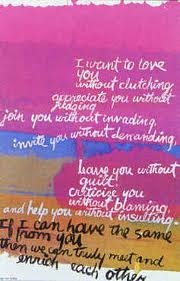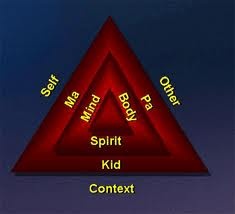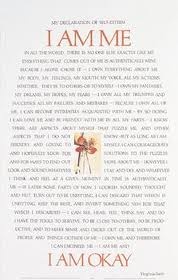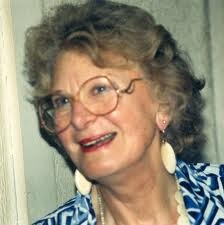allows us to recharge and accomplish more.
Become more creative. When we loosen up, we free ourselves of
rigid ways of thinking and being, allowing us to get creative and
see things in new ways.
Emotional intelligence (EQ) skill 5: Resolve conflict positively
Conflict and disagreements are inevitable in relationships. Two people
can’t possibly have the same needs, opinions, and expectations at all
times. However, that needn’t be a bad thing! Resolving conflict in
healthy, constructive ways can strengthen trust between people. When
conflict isn’t perceived as threatening or punishing, it fosters freedom,
creativity, and safety in relationships.
1306
The ability to manage conflicts in a positive, trust-building way is the
fifth key skill of emotional intelligence. Successfully resolving differences
is supported by the previous four skills of emotional intelligence. Once
you know how to manage stress, stay emotionally present and aware,
communicate nonverbally, and use humor and play, you’ll be better
equipped to handle emotionally-charged situations and catch and defuse
many issues before they escalate.
Tips for resolving conflict in a trust-building way:
Stay focused in the present. When we are not holding on to old
hurts and resentments, we can recognize the reality of a current
situation and view it as a new opportunity for resolving old
feelings about conflicts.
Choose your arguments. Arguments take time and energy,
especially if you want to resolve them in a positive way.
Consider what is worth arguing about and what is not.
Forgive. If you continue to be hurt or mistreated, protect
yourself. But someone else’s hurtful behavior is in the past,
remember that conflict resolution involves giving up the urge to
punish.
End conflicts that can't be resolved. It takes two people to keep
an argument going. You can choose to disengage from a conflict,
even if you still disagree.
Source:
Helpguide.org
Authors: Jeanne Segal, Ph.D., and Melinda Smith, M.A. Last
1307


1308

4.33 THE FIVE FREEDOMS
The Five Freedoms of Becoming More Fully Human – Virginia Satir &
Mental Health - By Athena Staik, Ph.D.
In celebration of mental health, today’s post
honors family psychotherapist and social
worker extraordinaire Virginia Satir.
Recognized by many as “the pioneer of
family therapy,” she developed her own
approach, conjoint family therapy, in the
1960s, later known as the human validation
process model or the Satir Change Model as
applied to business organizations.
She had a great impact on the practice of
therapy in general Virginia Satir introduced
many transformational concepts, among
others: an emphasis in the role that love plays in therapeutic processes;
the human need for personal space and validation; the difference
between what people intend to say and what they actually say; and the
importance of healthy relationships and self-esteem in mental and
emotional health and well being.
Satir viewed each person as unique and empowered them to connect
with their own inner source of wisdom.
Satir believed the cause of mental imbalance were the limiting identities
or rigid belief systems people formed as a result of feeling forced to live
up to rigid expectations, comparisons, external standards and judgments
– that existed at personal, familial and cultural levels. Known for
demonstrations of her work with families, in which she seemingly
performed miracles before large audiences, Satir had a knack for helping
family members quickly access their strengths and authentic voices.
1309

Four Survival Stances
Satir observed that people developed one of four distinct “survival
stances,” or some combination of these, in attempt to cope with their
problems: (1) Placating; (2) Blaming; (3) Super-reasonable; and (4)
Irrelevant.
A fifth “stance” that she identified was
not really a stance, but rather her
definition for what mental health
looked like for a person, increasingly
so, once they made the transforming
choice of becoming more fully human.
Congruent and Fully Human
A healthy person was first and foremost authentic in the how they
related to self and others, in that they: appreciated uniqueness; flowed
with interpersonal energy; were willing to take risks; were willing to be
vulnerable; were open to intimacy; felt free to accept self and others;
loved self and others; and were also flexible and self-aware.
A healthy person also:
Communicates congruently with their words, emotions and bodies.
Makes conscious choices based on awareness, acknowledgment, and
acceptance of self, other, and context.
Replies to questions directly, evaluates before passing judgement,
and listens to own “wisdom box.”
Expresses sexual vitality, and names desires openly.
Makes requests of others without having to explain themselves.
Makes honest choices, and takes risks on own behalf.
1310

The Five Freedoms – Using Our Senses
Satir keenly observed that many adults
learned to deny certain senses from
childhood, that is, to deny what they hear, see,
taste, smell and touch/feel.
Noting the significant role our senses play in
our survival, she devised the following “Five
Freedoms” tool, essentially affirmations, to
help people connect to their body and self in
the moment, and focus their attention on their
inner resources and creative choices in the
present. (Here we see how ahead of her time
Satir was; these are mindfulness concepts proven today by neuroscience
research.)
The Five Freedoms are:
1. The freedom to see and hear what is here, instead of what
“should” be, was, or will be.
2. The freedom to say what you feel and think, instead of what you
“should” feel and think.
3. The freedom to feel what you feel, instead of what you “ought”
to feel.
4. The freedom to ask for what you want, instead of always waiting
for permission.
5. The freedom to take risks on you own behalf, instead of
choosing to be only “secure”.
Satir’s Therapeutic Beliefs and Assumptions
Satir believed people have an internal drive that propels them to become
more fully human. She viewed this positive energy, as a life force that
exerts wholesome pulls and pushes on us–physically, emotionally, and
spiritually–throughout life.
1311
Her therapeutic model rested on the following assumptions, that:
Change is possible. Believe it.
The most challenging tasks in life are relational. Simultaneously,
relational tasks are the only avenue for growth. All challenges in life
are relational.
No task in life is more difficult as the role of parent. Parents do the
best they can do given time the resources they “see” available to
them at any given time.
Next to our role as parents, no task in life is more challenging. We all
have the internal resources we need to access successfully and to
grow.
We have choices, disempowering and empowering ones, especially in
terms of responding to stress.
All efforts to produce change need to focus on health and possibilities
(not pathology).
Hope is a significant component or ingredient for change.
People connect on similarities and grow on resolving differences.
The major goal in life is to become own choice makers, agents and
architects of our life and relationships.
We are all manifestations of the same life energy and intelligence.
Most people choose familiarity over comfort, especially in times of
stress.
The problem is not the problem, coping is the problem.
Emotions belong to us. They are an essential aspect of experiencing
self, life, others.
All human beings at heart are beings of love and intelligence who
seek to grow, express their creativity, intelligence, and basic
goodness; need to be validated, connect, and find own inner treasure.
Parents often repeat own familiar patterns, even if dysfunctional.
We cannot change past events, only the effects they have on us today.
Appreciating and accepting the past increases our ability to manage
present.
Goal toward wholeness: accept parents as people and meet them at
their level of personhood rather than only in their roles.
Coping is the manifestation of our level of self-worth.
The higher our self-worth, the more wholesome our coping.
1312

Human processes are universal and therefore occur in different
settings, cultures, and circumstances.
I AM ME By Virginia Satir
A poem that Virginia Satir wrote following a session with a young
coachee who questioned the meaning of her life.
I am me.
In all the world, there is no one exactly like me.
There are persons who have some parts like me,
but no one adds up exactly like me.
Therefore, everything that comes out of me is
authentically mine
because I alone choose it.
I own everything about me
My body including everything it does;
My mind including all its thoughts and ideas;
My eyes including the images of all they behold;
My feelings whatever they may be…
anger, joy, frustration, love, disappointment, excitement, …
My Mouth and all the words that come out of it
polite, sweet or rough, correct or incorrect;
My Voice loud or soft.
And all my actions, whether they be to others or to myself.
I own my fantasies, my dreams, my hopes, my fears.
I own all my triumphs and successes, all my failures and mistakes.
Because I own all of me I can become intimately acquainted with me.
By doing so I can love me and be friendly with me in all parts.
I can then make it possible for all of me to work in my best interests.
I know there are aspects about myself that puzzle me,
and other aspects that I do not know.
But as long as I am friendly and loving to myself,
I can courageously and hopefully, look for solutions to the puzzles
and for ways to find out more about me.
However I look and sound, whatever I say and do,
1313


And whatever I think and feel at a given moment in time is me.
This is authentic and represents where I am in that moment in time.
When I review later how I looked and sounded, what I said and did,
And how I thought and felt, some parts may turn out to be unfitting.
I can discard that which is unfitting,
And keep that which proved fitting,
And invent something new for that which I discarded.
I can see, hear, feel, think, say and do.
I have the tools to survive, to be close to others, to be productive,
and to make sense and order out of the world of people
and things outside of me.
I own me, and therefore I can engineer me.
I am me and I am okay.
Hope you’ve enjoyed this post, and, if you’ve been inspired in any way, or
have thoughts to share, I’d love to hear from you!
Virginia Satir (26 June 1916 – 10 September 1988) was an American
author and psychotherapist, known especially for her approach to family
therapy and her work with Systemic Constellations. Her most well-
known books are Conjoint Family Therapy, 1964, Peoplemaking, 1972,
and The New Peoplemaking, 1988.
She is also known for creating the Virginia Satir Change Process Model, a
psychological model which was developed through clinical studies, and
later applied to organizations. Change management and organizational
gurus of the 1990s and 2000s embrace this model to define how change
impacts organizations.
Source:
http://psychcentral.com/
1314
4.32 GENDER DIFFERENCES
There are numerous theories on gender differences in communication.
Some theories teach that they are nature, others that they are nurtured.
Some are innate and some hold that they are learned.
Others hold that there are no differences when speaking to an audience.
We are all the same.
Regardless of the differences, if and how they come about and what ever
the hard wiring of the brain may be, understanding the differences is
essential to communicate with your opposite.
One Communication, Two Applications
This list has two basic applications. One is with colleagues, those you
work with or interact with. The other application is with loved ones,
family and close friends. Wherever and whenever you are
communicating, understanding the differences can enhance your ability
to communicate.
Understanding this will help resolve problems in relationships.
We Are Not Stereotypical
The list below is general and based on research. Even so, each individual
may have qualities that are of their opposite. Some men will put the lid
down, ask for directions and read the instructions.
Some people are not typical of the lists below.
By understanding the gender differences in communication, what ever
they may be will help with the communication process.
First the list. Then what you can do about it. The list is based on studies
of how boys and girls communicate from preschool to adulthood. The
findings are that we are quite different culturally.
Gender Differences in Communication
1315
Women
Seek out relationships with others
Relate to others as equals
Prefer interdependency, collaboration, coordination and cooperation
Make decisions based on mutual agreement
Desire closeness, togetherness and affinity
Care for the approval of peers
express themselves more in private
Are more open to share problems
Tend to focus on details of emotions
More concerned with feelings
May mix personal and business talk
Tend to ask for help, advice and directions
Offer sympathy
Display empathy
Desire to understand problems
Tend to take a more sober look at challenges
Men
Tend to seek standing and position
Relate to others as rivals
Tend toward independence and autonomy
Choose or resolve by force, persuasion or majority rule
Desires space
Tend to seek the respect of their peers
Express themselves more in public
Keep concerns to themselves
Tend to focus on the details of fact
Often will not ask for advice, help or directions
Freely offer advice and analysis
Are problem solvers
Tend to look at challenges as a game unless life and death is at stake
Men can learn sensitivity, openness, and self control with
competitiveness when communicating with women.
1316

Women can learn to be more direct, assertive, and mirror the feelings of
the men who they have to communicate with.
The list is not to make women into male communicators and men into
female communicators. This list is a starting point to use to improve
communication with the opposite sex.
Source:
http://www.speechmastery.com/gender-differences-in-
communication.html
1317
4.35 PITFALLS FOR COACHING
● Jumping to solutions
● Advocating too early
● Assuming you know what the coachee wants to get out of the
conversation or coaching relationship
● Reloading rather than listening.
How to avoid some pitfalls of coaching
1. Reach agreement up-front.
Do not to start without a signed agreement between the coach and the
coachee. If coaching is your ‘bread and butter’, you need to ensure that
you will be paid for your services. If the potential coachee is reluctant to
talk through these important issues before intervention starts, it’s highly
unlikely that those issues—including payment of your professional
fees—will occur later.
2. Know the difference between being ‘in control’ and ‘in charge’.
Coaches need to let go of any desire to control outcomes. For a coach to
be effective, s/he must remain ‘in charge’ but be prepared to give
‘control’ to the coachee. It is the coachee who must accept responsibility
for his or her behavior and goal-achievement.
3. Remain solution-focused.
Coaching is a goal-directed, solution-focused activity. The coach must
ensure that his or her actions are forward-looking rather than backward
looking and focusing on what works rather than dwelling on the
problem. If as coach you recognize the need to recommend the services
of an accredited therapist—do so.
http://www.justasktom.com/topic/staff-related-issues/how-avoid-pitfalls-
coaching
1318
4.36 FEAR
Courage is not the absence of fear, but rather the judgment that
something else is more important than fear. – Ambrose Redmoon
(aka James Neil Hollingworth).
++++++++++++++++++
Our deepest fear is not that we are inadequate.
Our deepest fear is that we are powerful beyond measure.
It is our light, not our darkness, that frightens us.
We ask ourselves: “who am I to be brilliant, gorgeous, talented and
fabulous?”
Actually, who are you not to be?
You are a child of God.
Your playing small doesn’t serve the world.
There’s nothing enlightened about shrinking so that other people won’t
feel insecure around us.
We were born to make manifest the glory of God that is within us.
It’s not just in some of us; it’s in everyone of us.
And as we let our own light shine, we unconsciously give other people
permission to do the same.
As we are liberated from our own fear, our presence automatically
liberates others.
(Nelson Mandela, 1994 Inaugural Speech)
++++++++++++++++++++++++++++++++++++++++++++++++
4.36.1 FEAR - False Evidence Appearing Real
By Harry McDuffee
There is an old saying that says, "You Have Nothing to Fear Except Fear
Itself!" How true is that?
Everyone has fears. What do you fear? Some people have a fear of the
dark, some fear heights, some fear closed in spaces - What is it that you
fear?
Did you know there are those that fear Success? That's right there are
people that are afraid of succeeding at something! There are people that
1319
spend their whole lives failing because they are afraid of succeeding at
something. So guess what - they spend their whole lives failing because
they feel success carries to big a price tag. So they never really dig in and
try to succeed!
What I want to do right now is give you a definition of F.E.A.R. that I
heard some years ago. I can't remember where I got this now but it is the
best definition I've ever heard. Are you ready? Here it is:
False Evidence Appearing Real
Fear is False Evidence Appearing Real! Fear will rear its ugly face and
make you believe what is unbelievable. Fear can appear and make you
see a false Reality, but Fear is never a Reality! That is why it spells out -
False Evidence Appearing Real!
Let me ask those of you that Fear the darkness - What is in the dark that
isn't there in the light? The answer is nothing! We can imagine all sorts
of things but where are those things when the light goes on?
When I was a little boy my mommy would come into my room and tuck
me in than turn out the light (bedtime), after she left the room I would
start screaming - 'mommy, mommy, mommy help me mommy snakes in
my bed'. My mommy would come in and turn on the light and the snakes
would disappear. Where did they go? My mommy would search under
the bed, in the closet, dresser draws, etc. NO SNAKES! Were the snakes
ever in reality there? F.E.A.R.!
Isn't this the way we all do when it comes to success? We (myself
included) can find all the reasons why it won't work! We drupe around
in the darkness never thinking to just turn the light on so we can see the
actual Reality of the thing. Don't believe the False Evidence Appearing
(the friend who says you can't make no money doing that - get a job or
this is a scheme, scam, etc.). The Reality is you are in Business treat your
business like any business! Show up for work on time, learn what you
need to do for your business to succeed and do what is required to
succeed and you will.
There are 3 things that are REAL: Death (Hank Williams sang a song,
"you ain't getting' out of this world a live), Taxes (Uncle Sam will get his
share) and a Higher Power - Now that is Reality!
1320
There is another Reality straight from the month of my mother - "Can't
Never Did Do Nothin'!" The word Can't comes from F.E.A.R.! My mother
also told me, "Son, You Can Do Anything If You Want To Do It Bad
Enough. It just depends how bad you WANT it!" I'm asking you, 'How
Bad Do You Want To Succeed?'
Don't let Fear cloud your judgment. There is all kinds of false evidence
with an appearance of reality, but if you will turn the light on then you
can see that what appears to be in the darkness is just an imagination
run wild. Turn On the Light and See what is really there - REALITY!
There is no reason in the world why you can not do for yourself what
you do for your Employer on the job. The biggest difference between the
J.O.B. and your Home-Based Business is you are calling the shots - Not
your Employer! The other












